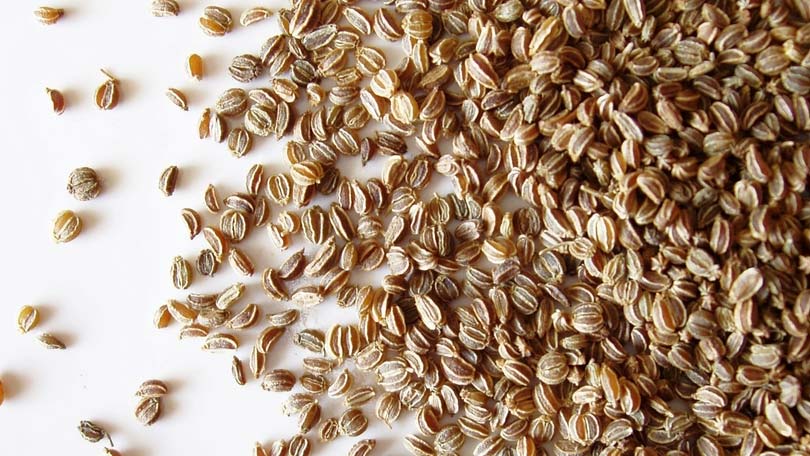
A member of the carrot family which is native to India/China and cultivated in France, celery seed is an often overlooked member of the modern spice rack. With scent and flavor profiles similar to that of fresh celery, the seeds can enhance many dishes with their grassy, almost hay-like flavor, and are a wonderful addition to many traditional “warm weather” dishes attributed with North American cuisine.
Characteristics
The dried fruit of the Apium graviolens, celery seed is essentially a more intense, concentrated version of fresh celery – is has similar aromas and flavors, but is less…well, fresh. The green, grassy notes of fresh celery are replaced by more prominent sweet and even citrusy qualities. The plant has several regional varieties, the most common being French or Indian. Celery, also known as ‘smallage’ in some historical documents and recipes, has thick, distinctive, pale green stalks and a leafy top. Its stable root system makes it a reliable grower in the right conditions; the plant is comfortable in cultivated gardens and out in the wild, and both breeds are edible.
Celery seeds, whose essential oil (apiol) is identical to that of fresh celery stalk and therefore similar in fragrance, can range in color from a light tan to medium or greenish-brown.
Common Uses
Celery seed is frequently used in Mediterranean, European, and North American cookery. It is particularly useful in pickling solutions, pairing with dill to create flavorful sandwich sidekicks. Sausages, salad dressings, and soups also receive the seeds well, as do certain breads and crackers. Tomatoes, with their sweet and fresh flavor, pair nicely with the seed as well, and are particularly lovely when used together to create cool, refreshing summer salads or side dishes. Some cultures have even utilized the seeds as a simple condiment, which makes sense – celery salt, a combination of the seeds and coarse salt, can be used as a substitute for table salt and/or to season savory dishes and cocktails (like the Bloody Mary).
Celery in its entirety has been used decoratively (woven by the Greeks into funereal garlands) and medicinally for thousands of years. The plant is said to have basic restorative and anti-inflammatory properties, and has been used to treat arthritis, cystitis, and pain associated with urinary tract infections. Celery seeds have been used independently to treat many physical ailments, including anxiety, muscle spasms, inflammation, and loss of appetite. The seeds reportedly have diuretic qualities and can assist in the flushing of toxins from the body; they are also used as a treatment for gout. Celery also has a somewhat amusing history as an aphrodisiac in Ancient Rome; we’ll leave you to decide what its best used for.
Use and Storage
Celery seed is easily purchased at farmer’s markets and good supermarkets. The seeds should be stored in an airtight container out of direct sunlight.
Use caution when adding seeds to soups or long cooked items, like braising liquids – it’s best to add them at the end of cooking, as a slow cooking process can pull out bitter flavors into the food.
Use It (How to/where)
- in pickling liquids and brine
- in relishes
- in corn salads
- to season cole slaw or potato salad
- in Manhattan clam chowder and other savory soups
- paired with fresh tomatoes and cucumbers
- added to dressings and marinades
- in ground meat for sausages
- wrapped into a bouquet garni
Recipe using Celery Seed
Classic Two-Color Cole Slaw
1 small head green cabbage, outer layers removed, halved and cored
1 small head red cabbage, outer layers removed, halved and cored
½ cup shredded carrots
¼ cups mayonnaise
¼ cup apple cider vinegar
1 tablespoon celery seed
¼ teaspoon ground white pepper
½ tablespoon salt
4 tablespoons sugar
1 tablespoon grated onion or shallot
Shred all cabbage as thin as possible and set aside in large bowl. In another bowl mix mayo, vinegar, onion, sugar, and spices until smooth. Pour mayo mixture over cabbage and shredded carrots. Toss well and season with additional salt and pepper if necessary. If creamier dressing is desired, add a bit more mayo after mixing dressing over cabbage. Serve well chilled.
